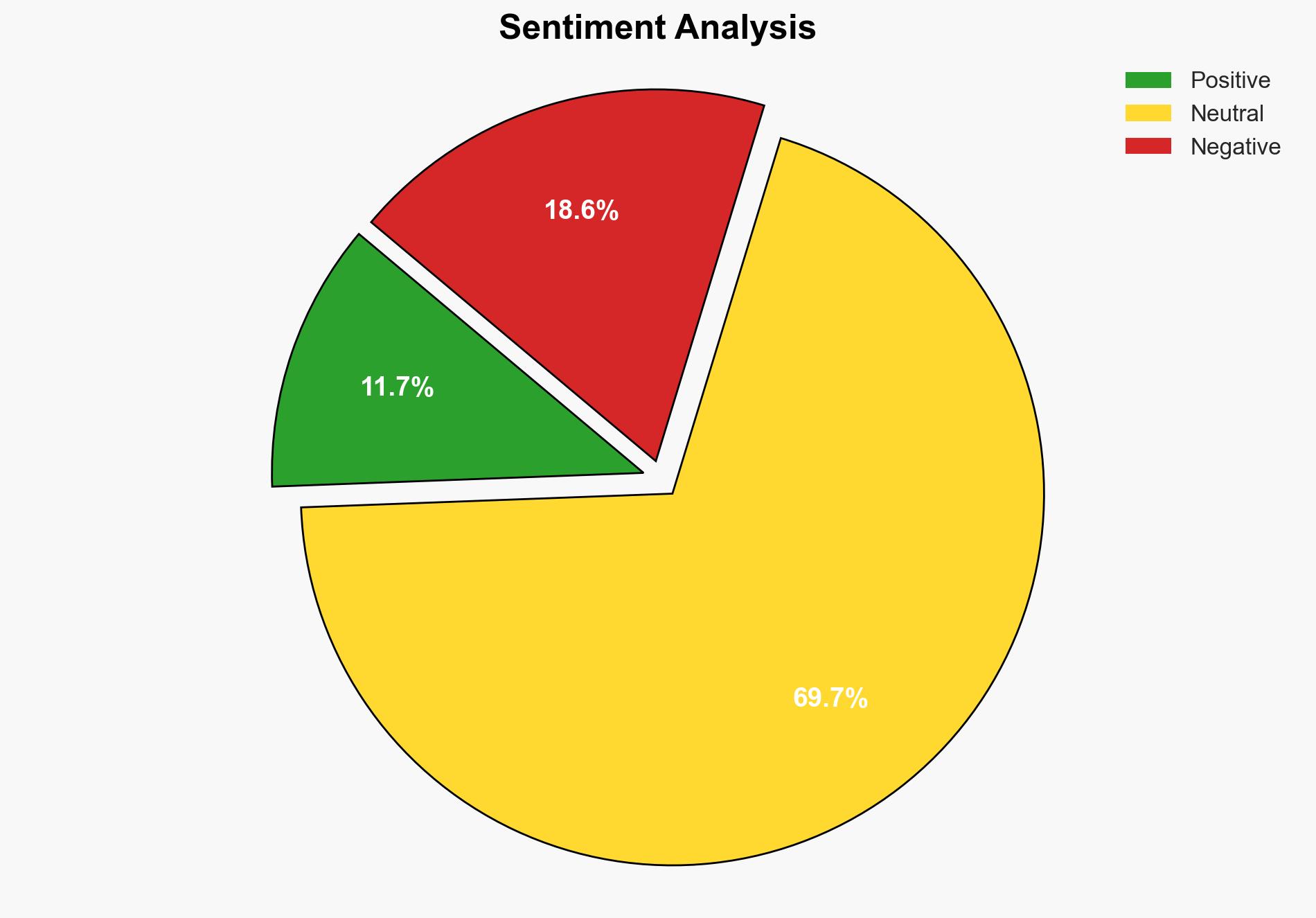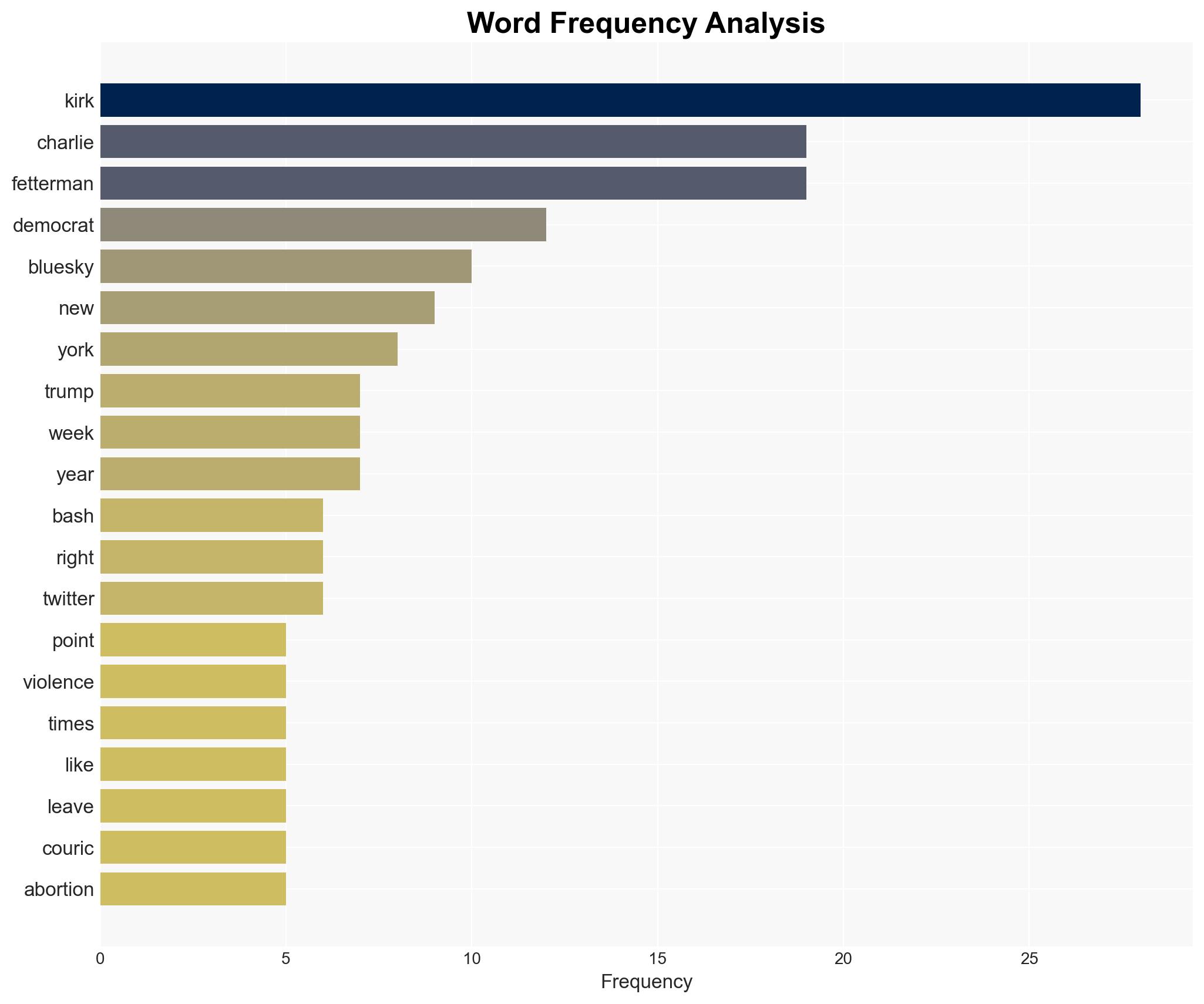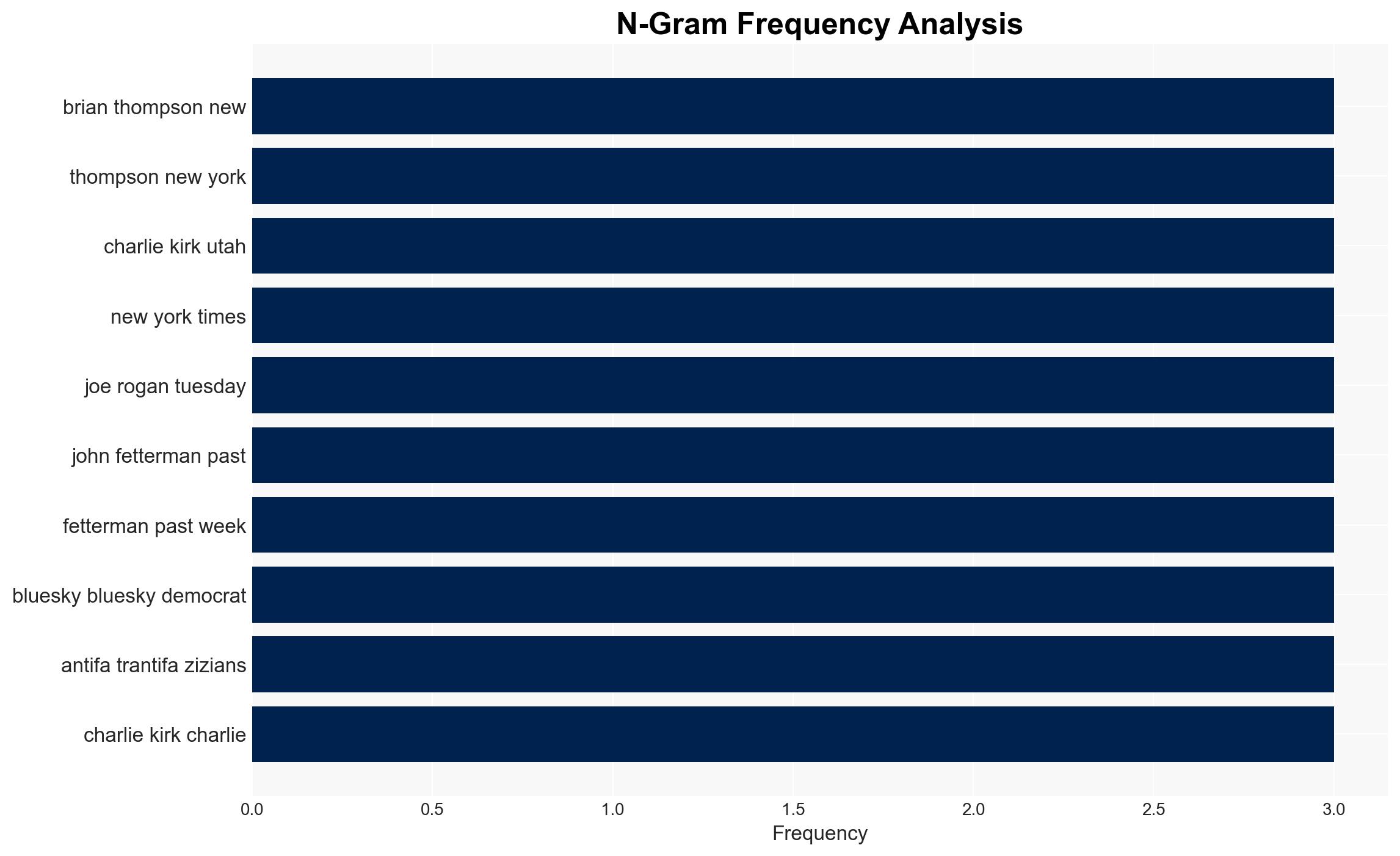Wheres the violence Look to the Left – Wnd.com
Published on: 2025-11-19
AI-powered OSINT brief from verified open sources. Automated NLP signal extraction with human verification. See our Methodology and Why WorldWideWatchers.
Intelligence Report:
1. BLUF (Bottom Line Up Front)
There is a significant risk of increased political violence in the United States, primarily driven by heightened rhetoric and polarization. The most supported hypothesis is that the political left and right are not equally culpable for violent rhetoric and acts, with the left currently exhibiting more aggressive tendencies. Recommended actions include enhancing monitoring of extremist groups and rhetoric, and promoting dialogue to reduce polarization. Confidence Level: Moderate.
2. Competing Hypotheses
Hypothesis 1: Both the political left and right are equally culpable for violent rhetoric and acts, contributing to the current climate of political violence.
Hypothesis 2: The political left is more culpable for violent rhetoric and acts, as evidenced by recent incidents and rhetoric from left-leaning individuals and groups.
Analysis suggests Hypothesis 2 is more likely, given the specific examples of leftist violence and rhetoric cited in the source text, such as the celebration of violence against conservative figures and the historical context of leftist groups engaging in violent acts. However, this does not preclude the right from also contributing to the overall climate of violence.
3. Key Assumptions and Red Flags
Assumptions include the accuracy of reported incidents and the interpretation of rhetoric as incitement to violence. Red flags involve potential bias in the source material, which may selectively highlight leftist violence while downplaying or omitting right-wing violence. Deception indicators include the possibility of exaggerated or fabricated incidents to sway public opinion.
4. Implications and Strategic Risks
The continuation of violent rhetoric and acts could lead to increased civil unrest, further polarization, and potential destabilization of political institutions. There is a risk of escalation into more organized and widespread violence, potentially involving cyber and informational warfare tactics. Economic impacts could arise from decreased investor confidence and increased security costs.
5. Recommendations and Outlook
- Enhance intelligence monitoring of extremist groups and rhetoric across the political spectrum.
- Facilitate bipartisan dialogue initiatives to reduce polarization and promote understanding.
- Best-case scenario: Successful de-escalation of rhetoric and reduction in political violence.
- Worst-case scenario: Escalation into widespread civil unrest and potential domestic terrorism.
- Most-likely scenario: Continued sporadic incidents of violence with gradual increase in severity.
6. Key Individuals and Entities
Charlie Kirk, John Fetterman, Joe Rogan, Brian Thompson, Turning Point USA, Jane’s Revenge, Black Lives Matter, Antifa.
7. Thematic Tags
Cybersecurity, Political Violence, Polarization, Extremism, Rhetoric, Civil Unrest
Structured Analytic Techniques Applied
- Adversarial Threat Simulation: Model and simulate actions of cyber adversaries to anticipate vulnerabilities and improve resilience.
- Indicators Development: Detect and monitor behavioral or technical anomalies across systems for early threat detection.
- Bayesian Scenario Modeling: Quantify uncertainty and predict cyberattack pathways using probabilistic inference.
Explore more:
Cybersecurity Briefs ·
Daily Summary ·
Support us





